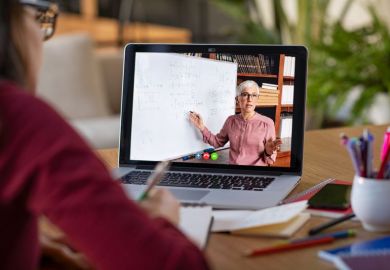As leaders of an executive MBA at McMaster University’s DeGroote School of Business, we felt the burden of expectations as we discarded our established game plans in March and started again with a virtual delivery model.
This is, after all, an EMBA in digital transformation, designed to develop leaders for an age of technological disruption. If we couldn’t do the transition to a new normal – whatever that is – who could?
There have been plenty of glitches, but we have survived, even succeeded in important ways, through a process of co-creation encompassing staff and students. These are the lessons we have learned.
Never assume. The 24 people in our cohort are also busy working people, who were now ensconced at home, often with children, spouses, cats and dogs. They are leaders in their own organisations with the added task of nurturing employees through their own challenges.
Yet without consulting them, we made assumptions about their availability, their challenges and their expectations. We quickly learned that we were building a model on false assumptions. Once they were brought into the discussion, we could co-create our online residency model – a three-week Zoom-based programme aimed at replicating, as closely as possible, the intimacy of the physical residency that we had to abandon. Students virtually invited instructors and classmates into their homes, giving them glimpses of the books they cherish, or the favourite hockey sweaters they wear in “real life.”
Co-creation is a powerful theme in enhancing success and buy-in. It can also broaden and deepen student engagement. Whereas in physical meetings the most forceful personalities can sometimes dominate the agenda, adroit use of online channels such as Slack and Slido can allow other voices to chime in.
Set some principles. In such unprecedented times, you need some common understanding among students, instructors and administrators. We developed a Charter of Principles, led by: “We show respect for all individuals.” It continues: “Nobody signed up for this. Not for the sickness, the social distancing, the online learning and teaching. With that in mind we will work together to make this work.”
To build on this base, we provided avenues for constant feedback, including a 24-hour accessible online polling tool to solicit “in the moment” comments, as well as broader reflective thinking. Virtual “office hours” and open-door policies are critical to ensure the learning experience is enriching despite profound personal and professional challenges.
Students have commented on the programme’s rapid adaptability to their needs, creating a sense of all of us being allies in this endeavour. “I am happy to be part of an agile and progressive business school,” one student commented.
Prepare for the technical failures. The technology is brilliant but there have been moments when the tools just weren’t there – a missing video, for example. Teachers must have a “what-if” backup – a Plan B, or perhaps a series of Plan As. This requires levels of organisation and improvisational agility that most instructors have never previously been required to demonstrate.
There is another consequence. Academic settings often have a kind of hierarchy between teaching staff and administrative/support staff. Online learning flattens the hierarchy, because teachers rely absolutely on empowered assistants to deliver their curriculum – from simply finding the elusive unmute button to delivering an intricate multimedia presentation.
Think “less is more”. We like the Zoom facility for moving between full-class shared screens and small-group breakouts – and doing it on the spur of the moment, responding to the issues at hand.
This allows for the exercise of a cardinal rule: less of the instructor usually means more in class value. Instructors find it effective to deliver shorter bursts of information, punctuated by videos, polls or breakouts, rather than long presentations centred on them. Classes seem to work best at a maximum hour and a half. As a rule, instructors should look at paring down their own delivery by more than half, while expanding student engagement by 150 per cent!
Even so, the demands on faculty may actually grow. In digital learning, some students find it harder to absorb information and ask questions. Lecturers may end up doing less in “the classroom” and more in their virtual office hours.
Value the story. There is power in experience. It is particularly important in this new teaching and learning reality, where there is often limited data to provide direction but rich analogies and narratives that can deliver meaning. The students themselves bring their own compelling narratives around their particular learning experiences, of course, while instructors juggle various combinations of speaking on video, moderation of class discussions, assessment and summarising the insights gained.
Amid such varied experiences, “every presentation is a theatrical performance, a structured improvisation,” concludes David Hurst, one of our instructors. And while that has its challenges, it also has its joys.
Milena Head is academic director of the EMBA in Digital Transformation at the DeGroote School of Business, McMaster University. Michael Hartmann is the programme’s executive director.
Register to continue
Why register?
- Registration is free and only takes a moment
- Once registered, you can read 3 articles a month
- Sign up for our newsletter
Subscribe
Or subscribe for unlimited access to:
- Unlimited access to news, views, insights & reviews
- Digital editions
- Digital access to THE’s university and college rankings analysis
Already registered or a current subscriber?










